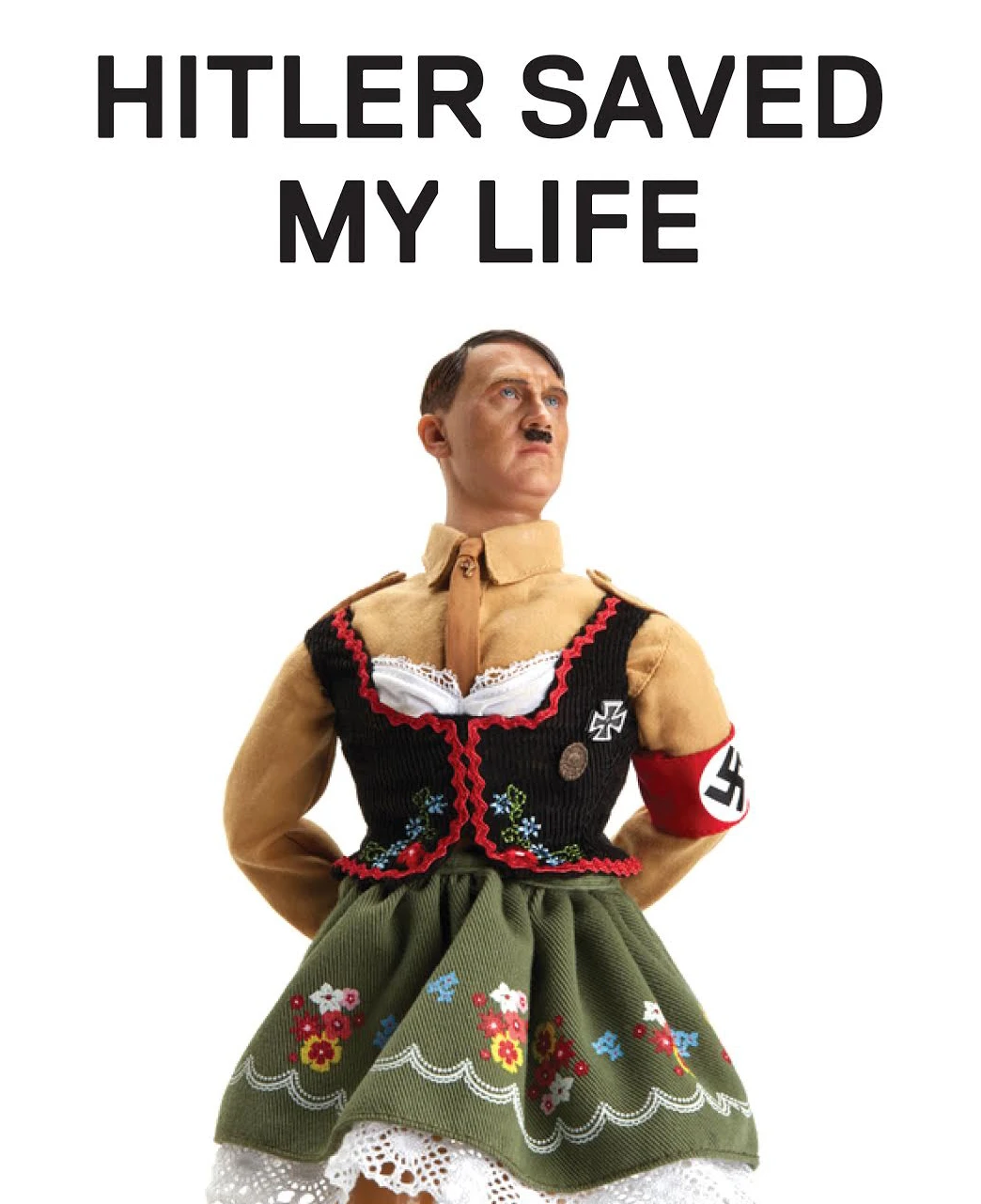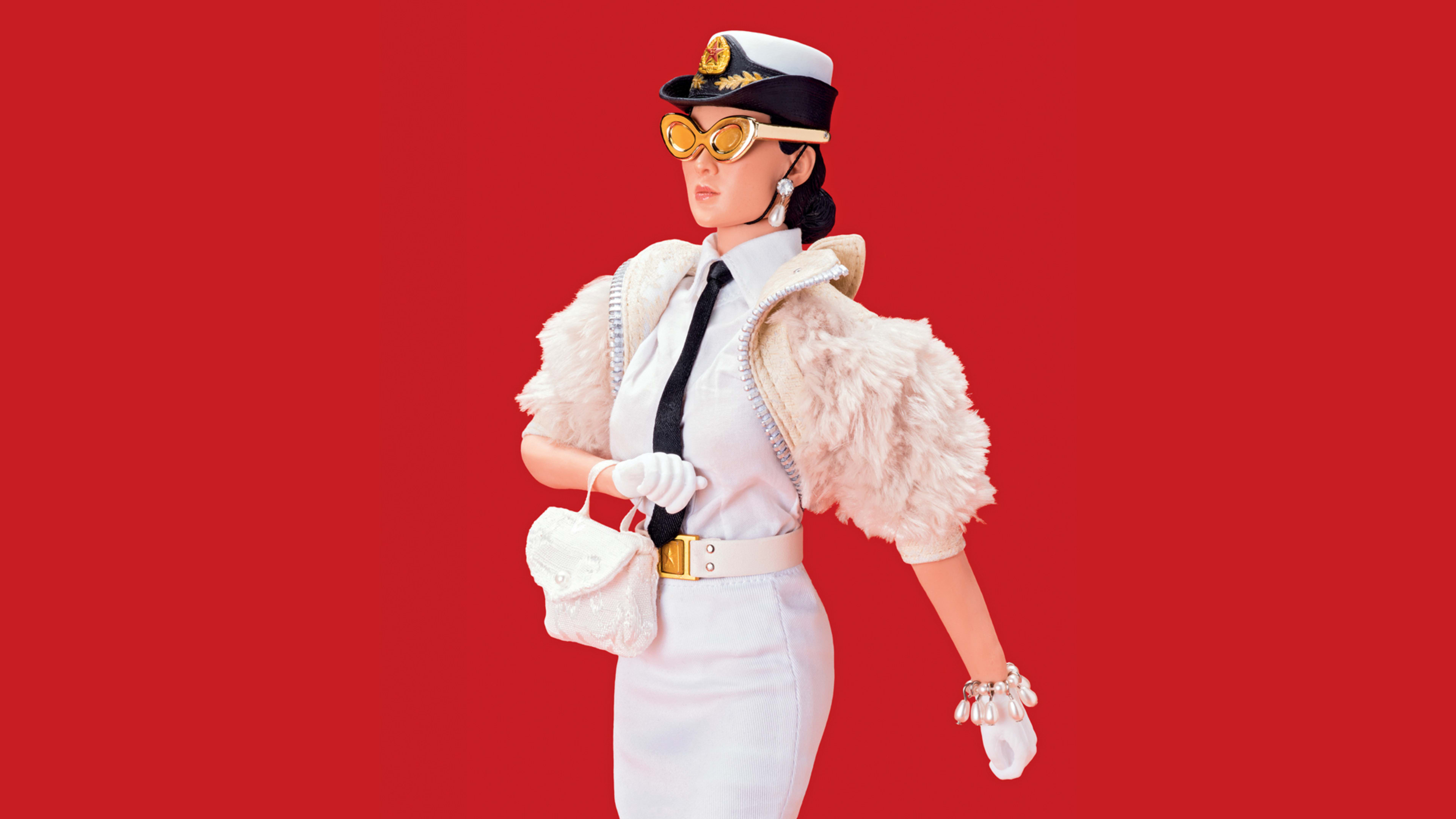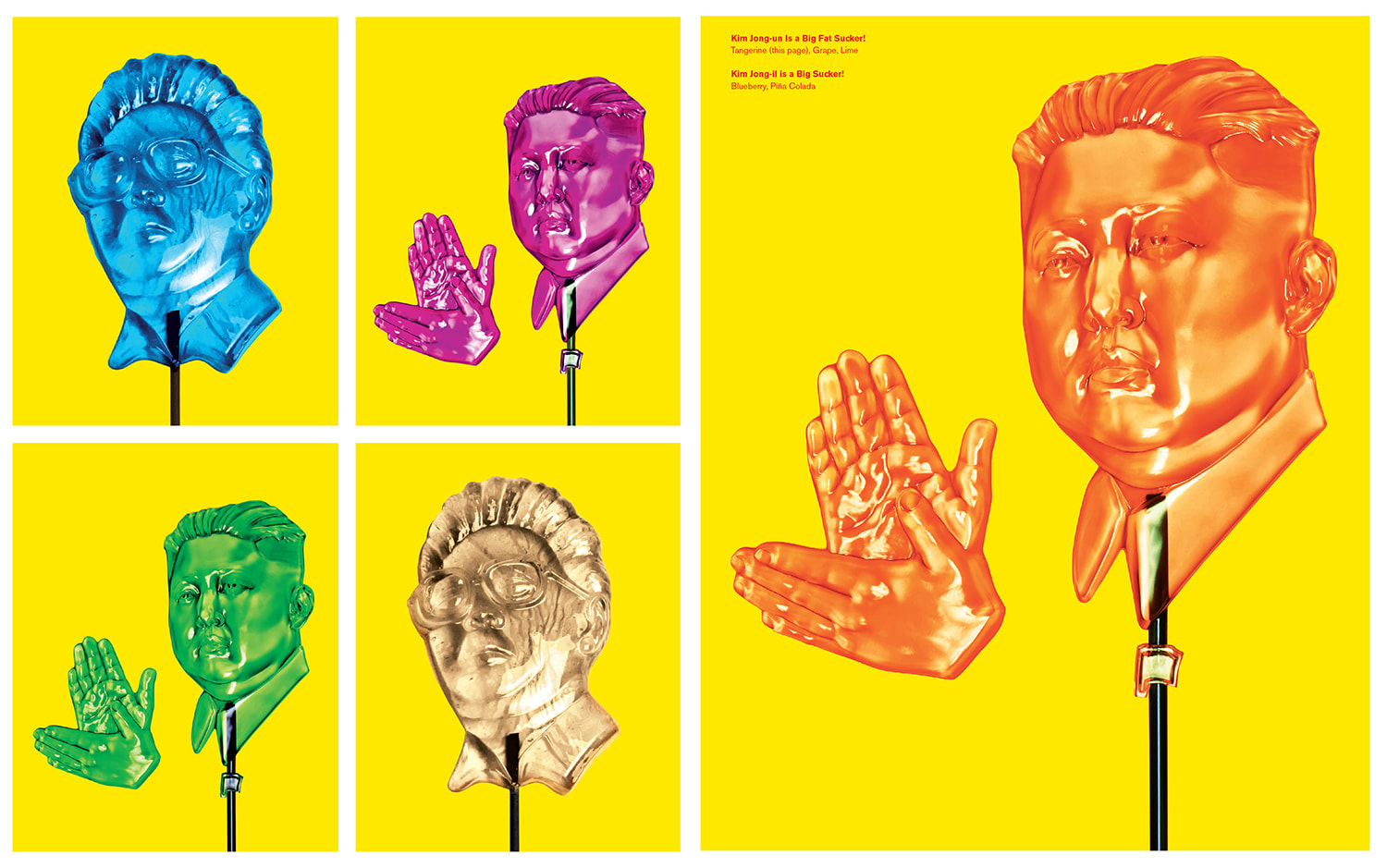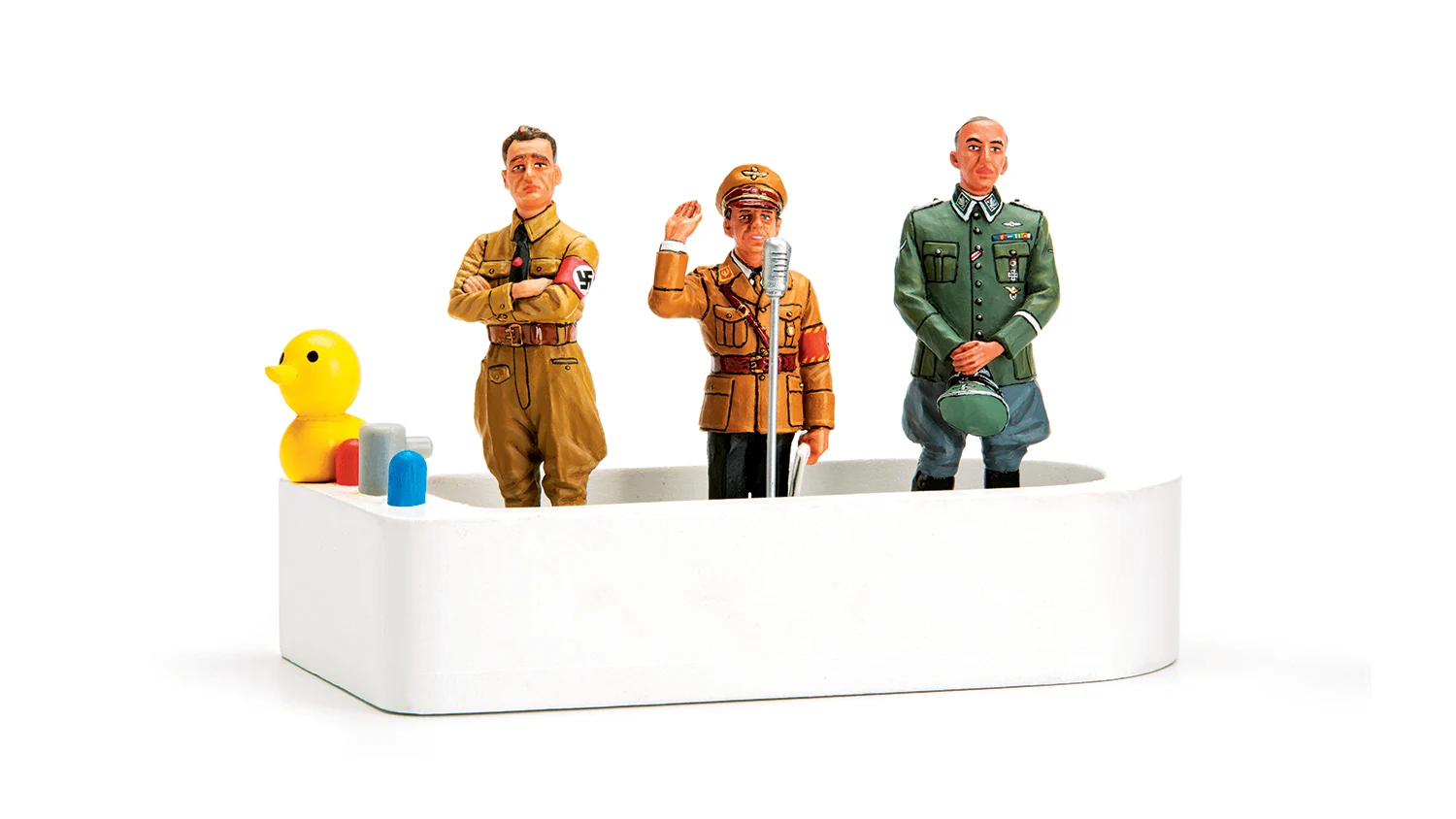During his nearly two decades at the Portland, Oregon-based agency Wieden+Kennedy, Jim Riswold grew into a titan in advertising. He was the force behind iconic campaigns including “Bo Knows,” featuring Bo Jackson and “Mars Blackmon” (aka Spike Lee) for Nike, as well as “Hare Jordan,” which paired Bugs Bunny with Michael Jordan (and without which Space Jam wouldn’t exist). His tenure as a creative director for one of the most prominent agencies in the business was legendary (as was his famously prickly personality).
In 2000, Riswold was diagnosed with chronic myeloid leukemia, which led to his decision to leave the ad world and turn his attention to creating art. A few years later, he exhibited a photo series that portrayed some of history’s most hated people as toy figurines placed in absurd and surreal settings. There’s Hermann Göring with a wheelbarrow full of produce (Göring’s Lunch), Benito Mussolini riding shotgun on a trike (Mussolini’s Tricycle), and lots and lots of Adolf Hitler, including a version of him in dirndl (a traditional German frock).
In his new memoir, Hitler Saved My Life (on sale September 26), Riswold recounts his battle with leukemia (and later, prostate cancer) and how illness led to his second career as an artist. Given the subversive nature of his art–reflected in the provocative title of his book–it shouldn’t come as a surprise that Hitler Saved My Life is not a saccharine rumination on the importance of living and accepting death. Riswold’s dry sense of humor is woven into every sentence, including his recollection of encountering an 18-gauge biopsy gun that went straight up the where-the-sun-don’t-shine.
In an email interview, Riswold explains why he chose art, what Hitler taught him about creativity that the ad world couldn’t, and the joy (and necessity) of making a fool out of yourself.
Fast Company: Was your decision to create art based more on keeping yourself distracted from leukemia or feeling like it was a now-or-never kind of situation?
Jim Riswold: It started as distraction. It morphed into a lifesaver in that I learned not to be afraid of it. It’s like Hitler et al. It’s a nasty bully and like most nasty bullies, it demands fear.
Fuck fear.
Of course, this brings us to my Hitler-as-nincompoop art. Yes, I know, for instance, my so-called Hitler art begs the question, “What’s so funny about Hitler?”
Look, it’s no secret Hitler was a bad guy, except to psychotics, sociopaths, whackos, and certain right-wing talk show hosts. I’m going to repeat myself here, but it bears repeating: Bad guys don’t mind being called bad guys. But bad guys don’t like to be laughed at. Thanks to people like Ionesco, Swift, Voltaire, and Monty Python, I’ve always thought humor could diffuse fears and deflate even the most evil of egos. Never forget the Voltaire quote I always dredge up: “I have never made but one prayer to God, a very short one: ‘O Lord, make my enemies ridiculous.’ And God granted it.” I made Hitler look ridiculous. Hitler is ridiculous. But please don’t tell him I said so. I’ve heard you don’t want to get on his bad side.

FC: Do you think you would’ve gone into art had you not been diagnosed with leukemia?
JR: Oh god no. Leukemia rescued me (and colleagues) from 20 more years as an often grumpy, arrogant, pain-in-the-ass asshole in advertising. Now I’m a slightly less grumpy, arrogant, pain-in-the-ass asshole in fake art who wrote a book.
FC: What was that career transition like for you, going from being a veteran in one career to a rookie in the next?
JR: I’ve often said I went from a career selling things people don’t need to a career making things they don’t want. I seem to have overestimated the Hitler, Reign of Terror, Napoleon, Mao, Kim Jong-il, Kim Jong-un, WWI, PLA, and oncology art markets.
Sigh.
I remember my first venture to N.Y.C. after my first retirement from advertising to sell my so-called art to a few galleries. The best line came from my last gallery stop when the owner said, “You should’ve stayed in advertising.” Bottom line: I went from being overrated in one field to being not rated in another.
FC: Talk a little about your creative process for your art.
JR: I dive headfirst into my subject. I do my homework and read a lot of books. (Tip: Reading something more than 140 characters is worthwhile.) It’s not all that different from advertising spark plugs. If you want to sell spark plugs, you better know your spark plugs like Newton knew his calculus. If you want to make Napoleon art, you better know your Napoleon like Napoleon knew how to piss off the Austrians, Russians, British, Spanish, Prussians, et al.
When it comes to photographing toy Hitlers, toy Napoleons, toy Stalins, toy Mussolinis, toy Custers, etc, there’s usually an A-B shot list or a semblance of one. Then all hell breaks out and often new and better things than those originally planned come to life. In other words, you never really know what you’re going to get when you’re playing with Hitler toys.
However, this absurd spontaneity leaves me with way too many images and way over budget. I need an editor and an auditor.
FC: What perspective have you gained on advertising having been out of it professionally for more than 10 years?
JR: There are more important things in the world than advertising–cookies, for instance.
FC: Did the state of your health lend any sort of immediacy to your creativity?
JR: I didn’t want “Here lies the guy who did that ‘Bo Knows’ commercial” on my tombstone. But I’m not exactly sure “Here lies the guy who did Hitler-in-a-dirndl art” is any better.
FC: What is it about Hitler that saved you? That is to say, what did Hitler do that your work in advertising couldn’t do?
JR: I learned how to be vulnerable. Advertising doesn’t exactly promote vulnerability; it tends to promote complacency. However, creativity’s kryptonite is complacency. Complacency and vulnerability don’t mix. Cancer taught me how to be completely vulnerable.
It allows you to try new things. Picasso, no slouch in the trying-new-things department said, “God invented the giraffe, the elephant, and the cat. He has no real style, He just goes on trying new things.”
Vulnerability, however, does often lead to making a complete fool of yourself, i.e., Hitler in a dirndl art, Mussolini on a tricycle art, Napoleon lording over an empire of modern-day food products bearing his name, etc.
FC: Aside from learning to be vulnerable, is there anything else you learned about creativity from your art?
JR: Creativity demands making a fool out of yourself. You cannot be creative unless you are willing to walk around with your pants around your ankles. I love walking around with my pants around my ankles.
But that’s a different story.
André Breton said you cannot be creative unless you can visualize a horse galloping on a tomato.
I like André Breton.
I like tomatoes.
I am not too fond of horses.
Speaking of horses, I hated Spielberg’s War Horse.
Only Spielberg could get a horse to overact.
The movie should’ve been called My Friend Flicka Goes to War.
FC: Do you think that now that you’ve been doing your art for some time, that you’ll become complacent in that? Any advice for fighting creative complacency?
JR: Start every day stupid. If you start tabula rasa, you start everyday without inhibition and inhibition is creativity’s kryptonite. Also, it’s kind of hard to be complacent when you’re playing with Hitler dolls.
FC: What has surprised you most about being in the art world?
JR: Biggest surprise: People actually buy my stuff and hang it on walls or maybe they just buy it so they can burn it. Second biggest surprise: The art world is very similar to the ad world. Both worlds start with the letter “a” and throw too much money around.
Hitler Saved My Life is out September 26 and is available for preorder.
Recognize your brand’s excellence by applying to this year’s Brands That Matter Awards before the early-rate deadline, May 3.




